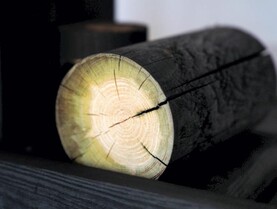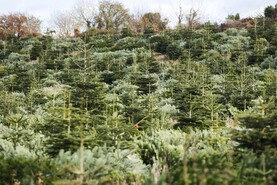Private non-farmer investment in forestry is new in Ireland compared with other European countries. Ireland relied on the State to carry out 95% of all afforestation up until the 1980s when the first EU State-funded afforestation schemes were introduced to encourage farmers to reduce agricultural surpluses.
Up until then, the State purchased and planted mainly bare land, which ceased a few years after Coillte began trading in 1989 and the company’s afforestation programme petered out by 2000.
Private planting, mainly by farmers, increased from 8,500ha in 1989 to 15,147ha at its peak in 2001 and then gradually declined over the past two decades to 2,016ha in 2021.
During this period, large- and small-scale private forestry investment fluctuated in Ireland. The Irish Forestry Unit Trust (IForUT) was established in 1994 to manage its Irish pension fund and charity investment in forestry. In recent years, a number of institutional European investors have set up in Ireland culminating in the Gresham-Coillte initiative.
Although this is the largest and most controversial, there has been plenty of activity including Foraois Growth Ltd, managed by Dasos Capital Ltd, and SLM Silva Fund, as well as numerous private small-scale non-farmer investors including professionals and retirees.
So why are private investors purchasing forests and forestry land, while farmers have lost interest in planting some of their holdings?
Forest cover
The investors have arrived because Ireland is the only country in Europe that can increase forest cover by approximately 65% without negatively affecting agriculture production. This would increase the area of forests to 1,270,000ha or 18% of the land area, which is still less than half the European average.
Investors are attracted to forestry as State aid is extremely generous, coupled with high financial returns from timber sales. In this environment, Teagasc surveys demonstrate that high-quality commercial forestry on good marginal land outperforms all sheep and cattle rearing or suckler cow production.
The current forestry programme with its increased premiums – up by 66% – is a major incentive. Even allowing for a mandatory area of 30% broadleaves and biodiversity enhancement, the returns are still excellent.
Investment companies are generally interested in purchasing large blocks of existing forests and bare land suitable for forestry, ideally 20ha and over, which is likely to lead to whole-farm afforestation. The current average size of new farm plantations is 6ha.
Taking 20ha as the benchmark afforestation area, investment companies shouldn’t be able to compete with farmers, mainly because of the initial outlay of at least €400,000 for good-quality forestry land.
The farmer who plants 20ha receives an annual tax-free premium payment of up to €22,000 for a native tree crop.
While the premium is €15,000/ha for commercial forestry, the owner could receive an additional €20,000 during the final five years from thinning revenue.
The 20ha farm forest owner receives five years’ additional premiums – between €75,000 and €110,000 – more than the private investor.
Average annual afforestation by farmers in 2020 and 2021 was 450ha compared with 1,750ha by non-farmers
So, farmers are still are in pole position to avail of the benefits of forestry regardless of who enters the market. Without having to make the initial investment of up to €400,000, the farmer has a head start on the investor.
In countries with strong farm forest cultures, the investor wouldn’t stand a chance, but with such a lack of confidence in farm forestry, the recent Gresham-Coillte investment plan is seen as a major threat.
Decline in planting
What has been noticeable about the rapidly declining afforestation programme has been the disproportionate decline in planting by farmers.
Even as late as 2005, the last year afforestation surpassed 10,000ha, farmers dominated the afforestation programme.
The programme of 10,096ha that year comprised 9,409ha by farmers. Average annual afforestation by farmers in 2020 and 2021 was 450ha compared with 1,750ha by non-farmers.
So, who’s afraid of the investors? Not the farmers who decide to plant portions of their land and avail of the best funded forestry package in the history of the State, nor the farmers who see forestry as a major income generator.
But these farmers are in decline as farm forestry has suffered since 2012, when the Department of Agriculture declared a virtual blanket ban on planting good-quality unenclosed land.
It was also the year ash dieback was introduced to Ireland with devastating consequences.
Farmers who have waited years for planting, felling and roading licences, along with those with diseased ash woodlands, now need reassurance from the Department that forestry is a long-term State-private partnership.
The first step by the State is to remove the pervasive toxicity of ash dieback by providing adequate compensation to ash forest owners. It needs to ensure that all farmers who wish to plant receive licences within a reasonable timescale and that they are guaranteed the right to access and harvest their forests when they reach timber production phase.
The State needs to be transparent with the public, including Project Woodland participants, when inviting overseas corporate investment in a State company to deliver a forestry programme heavily funded by the Irish taxpayer.
Also, the Department, as a Coillte shareholder, has an obligation to address the legitimate concerns of the social impact of an aggressive private-State forestry investment programme.
Forests need to grow organically but in a country that has a land bank of suitable marginal land for afforestation, farm forestry should be encouraged as a major viable land use with nothing to fear from private investors – large or small.
However, the concerns of those with serious reservations about large-scale institutional investment shouldn’t be confused with the arguments advanced by those who oppose all forestry, including farm forestry.
Farmers have shown in the past that they are capable of achieving annual planting programmes well in excess of the 8,000ha advocated by the Department.
They can do so again if the Department allows them the opportunity to manage their forests as sustainable businesses. That includes the right to leverage the carbon value sequestered by their forests and to treat afforestation as “one of the largest land-based, long-term climate change mitigation measures available to Ireland”, as outlined by the Climate Action Plan.






 This is a subscriber-only article
This is a subscriber-only article











SHARING OPTIONS: